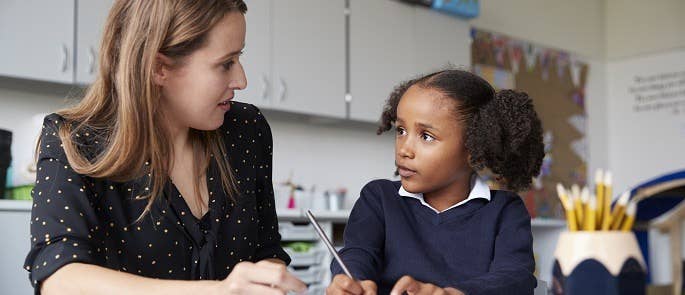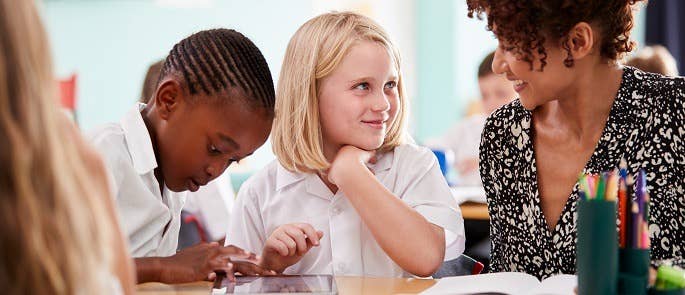Awareness, patience, excellent timing, limits, and instinct are all required for effective classroom management. Managing a big group of easily distracted young people with various talents and temperaments on a meaningful learning path is not simple. Unsurprisingly, there is no one-size-fits-all solution for effective classroom management. The most popular and innovative techniques are listed below.
Students require a healthy educator to learn correctly. As a result, the instructor must get adequate sleep, eat well, and take steps to enhance their well-being to complete this process. Before they need to take a few deep breaths to release their fury. A high school teacher is frequently quoted as saying that a minute of patience in the face of disappointment saves hundreds of minutes of regret.
Countless studies support the idea that self-care reduces stress, which can drain energy and impair judgment. At the same time, self-care is more of a habit or practice for well-being than an actual classroom management strategy. Benefits of this approach include improved executive function, greater empathy, and increased resilience. All these qualities will help people make better decisions. This is especially relevant in collision situations with difficult situations in the classroom.
It is critical to establish a positive relationship between the student and the teacher. It is vital for a healthy education, classroom culture, and academic achievement. The cornerstone of high-quality and reasonable education is proper relationship development between the instructor and the learner. Simple actions, such as welcoming students outside of class at the start of the day, have a significant impact. When a teacher swings by to listen and inquire how their day begins, the students are grateful. When teachers greet students before class and can say hello in a kind manner, they typically observe a beneficial influence. Many educators believe that a teacher’s ability to balance warmth and firm limits is the key to effective classroom management and relationships. As a teacher, maintain consistency while remaining adaptable. The instructor must unconditionally love his pupils while still requiring them to take responsibility. Children should be given a voice and encouraged to be solid and trustworthy leaders.
This might be one of the more fascinating points of view in a lengthy discussion regarding class management approaches. Finding strategies to make the most challenging student the best is one. When a teacher engages with such kids, the educational and communication processes become more fluid. The teacher must never forget to look at the conducting surface, even if it is inconvenient while using power-based contact. The source of the issue must be identified. Overall, many teachers have never seen a pupil who isn’t motivated to achieve. If a child misbehaves and appears to be weeping, something is wrong in their environment. If kids misbehave for attention, the teacher should investigate why they require it and how the teacher can provide it.
Teachers should keep developing the connection by carefully considering the context and utilizing language. When it comes to complimenting the development of challenging kids, the instructor should not be startled. It is preferable to be genuine rather than extolling the student’s achievements. It is more accurate to state that the instructor is pleased with the student’s accomplishments but not shocked because he always knew the student was capable. Finally, cultural variations may inadvertently influence a student’s success expectations. As a result, it is critical to consider any misconceptions about the educational process that may form. Teachers should not see their pupils as less intelligent or need assistance. Since cultural difference does not equate to cultural weakness, getting better does not require special care.

The importance of listening in communication cannot be overstated. Poor listening is the root of most misconceptions. Listening to kids in class might provide the instructor with two advantages. In the beginning, the instructor will serve as a role model for his students, who will enhance their listening skills and, as a result, acquire the material more effectively. Second, instructors may clarify misconceptions and improve learning by employing active listening. This method will help one’s kids study more effectively. Active listening pays close attention to what kids are saying. It checks to determine if the instructor has accurately interpreted them—for example, repeating the teacher’s assessment of how the pupils responded to the question. An intelligent method builds on students’ thoughts and challenges the class or asks questions. Furthermore, it is the most efficient method for building comprehension in the classroom and a superb example of excellent communication.

Supportive interactions between students and instructors have been shown to improve classroom participation. The instructor and the student both value student engagement and accomplishment. These supportive interactions are expected to counteract the propensity for kids from low-income families to perform poorly in school. This is because it is easier for students to share their opinions and ideas in class discussions, solve difficulties, and seek help when they need it when they feel encouraged. Higher levels of participation and engagement result in improved knowledge acquisition and achievement.
Communication helps to establish a positive learning environment. Teachers should get to know their pupils and demonstrate that a classroom is a place where they will not be judged or humiliated. It is an excellent idea to memorize student names and use them frequently at the start of the year. The teacher should consider the open-door policy. This is required so that children may come to the instructor with any difficulties. When communicating with youngsters, teachers should constantly be sensitive and kind. They should not be chastised for not understanding, and they should indeed not be mocked for their children’s opinions and ideas.
Furthermore, the instructor must be aware that some pupils are hesitant to speak in front of the class. Teachers can employ these aids if these youngsters are asked to participate in the lesson. Opening phrases, for example, can help youngsters feel safer. Forced involvement, on the other hand, is rarely essential. The quieter pupils are likely to have good listening abilities and study just as hard. Even though youngsters do not discuss their opinions, this occurs. The mentioned concepts and techniques are important for maintaining an educational process for children.
